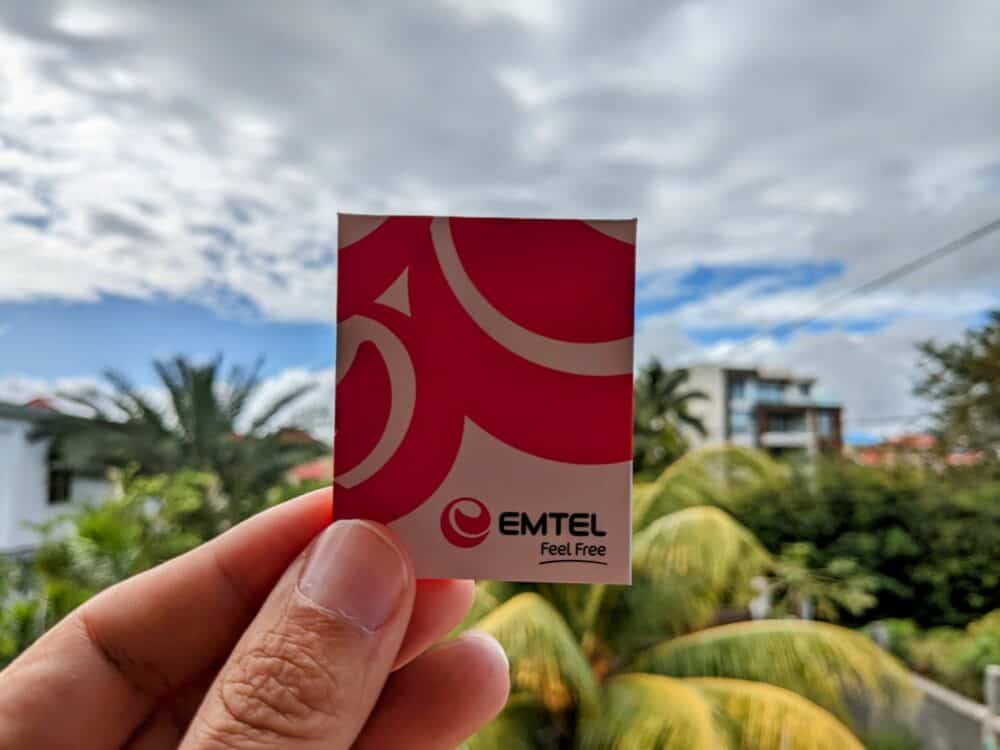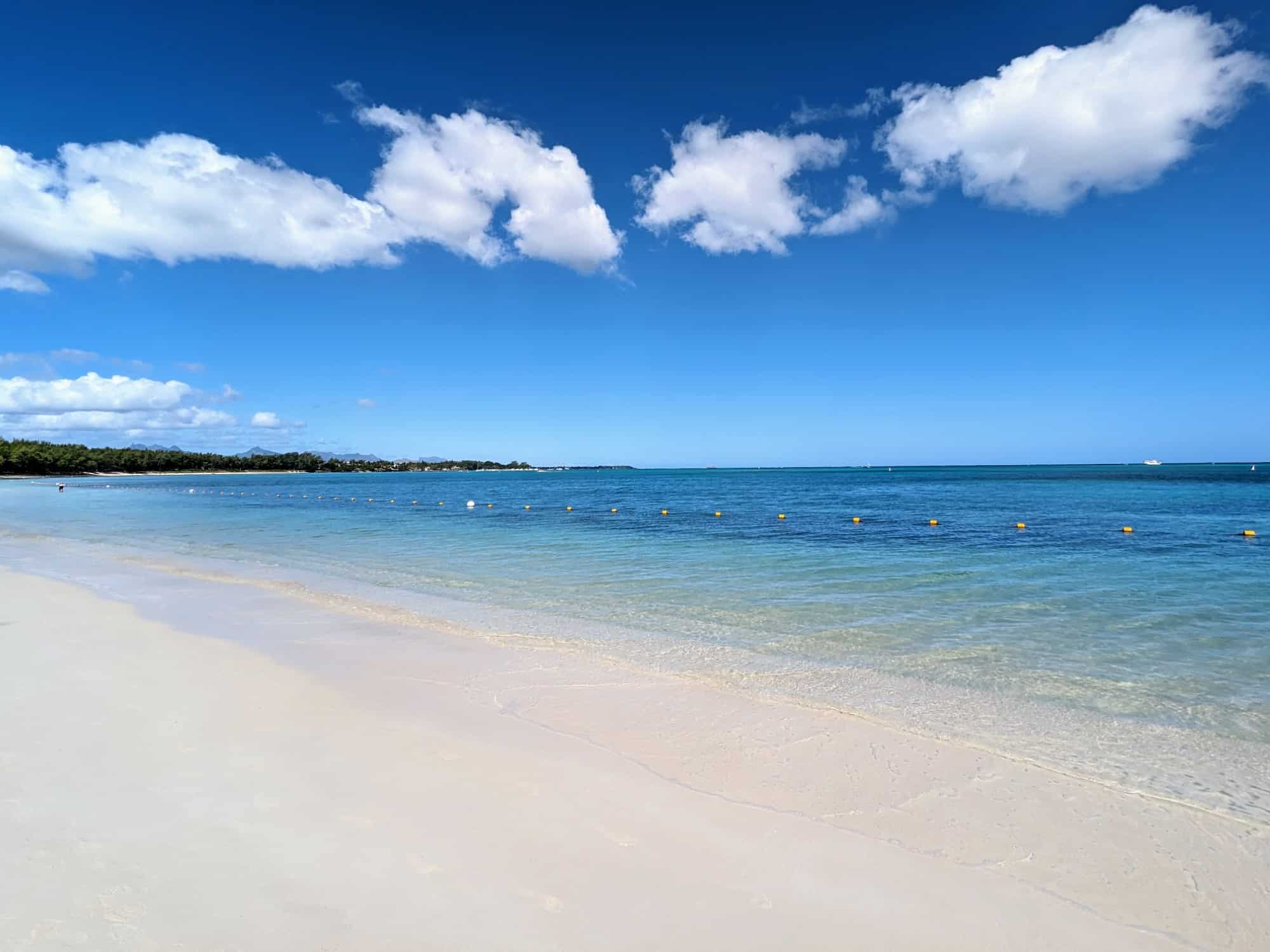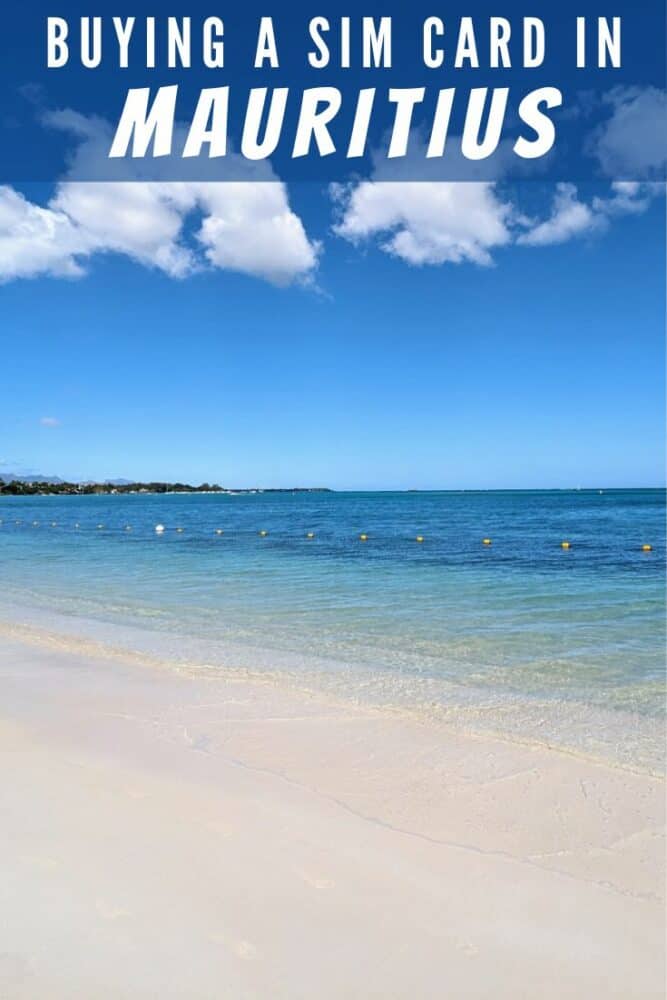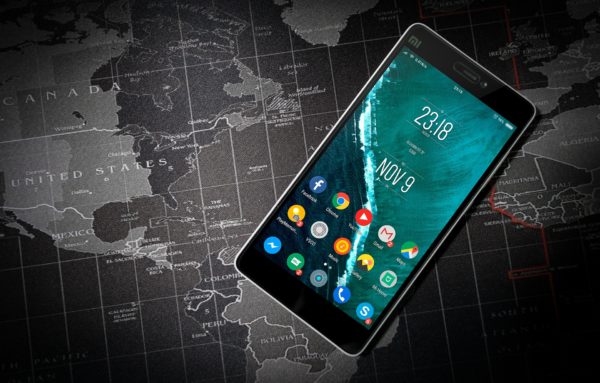Buying a SIM Card or eSIM in Mauritius
We may earn a commission from purchases you make after clicking links on this site. Learn more.For a little island off the east coast of Africa, Mauritius attracts a wide range of visitors. People go there to get married or take their honeymoon, kiteboard and windsurf on the wild east coast beaches, laze around on the beautiful beaches, or just enjoy the delicious seafood and other local cuisine.
I wasn’t there to celebrate my nuptials, and I’ve never kiteboarded in my life, but the beaches and the food were a strong drawcard. Heading there in the off season (northern hemisphere summer), both visitor numbers and prices were low, making it an even more appealing option.
There are dozens upon dozens of beaches to check out, and just as much to see inland, which meant that renting a car was definitely the best way to see the island. There’s plenty of Wi-Fi available in hotels and some restaurants and cafes, but given how much exploring I’d be doing, I knew I’d need to stay connected elsewhere as well.
Fortunately, buying a local SIM card turned out to be just as easy as getting sunburned or finding a delicious meal, and (outside the airport) very, very cheap as well.
As far as eSIMs are concerned, Mauritius isn’t well covered by the major vendors. Even so, there are a couple of options: my partner bought one so that she’d be connected straight away, and it worked well throughout our stay.
Whether you’re going for an eSIM or the physical piece of plastic, here’s what you need to know about staying connected in Mauritius.
Companies
There are three network providers in Mauritius: my.t, Emtel, and Chili. Of the three, my.t has the widest coverage and highest prices, Emtel is a little cheaper and doesn’t cover quite as much of the island, and Chili is the cheapest but has the least coverage.
LTE coverage is widespread across populated parts of Mauritius with both my.t and Emtel, and 5G is in the process of being rolled out. If you happen to be heading to the outlying islands of Rodrigues or Agalega, my.t has better coverage there.
Given how inexpensive cellular service is in general, there’s no real point shopping around on price between the three operators. Emtel SIMs are easy to find both inside and outside the airport, and activate immediately.
I’d seen reports that my.t’s promotional data packs could take a couple of days to become available. These reports weren’t super-recent, but given how little difference there is between the two main providers as far as most tourists are concerned, I decided to avoid the risk and just go with Emtel.
Travel eSIM for Mauritius
These days, it’s remiss not to mention travel eSIMs alongside any discussion of standard SIM cards, since they’re much more convenient and often have similar pricing.
Not so much in Mauritius, however: many eSIM providers don’t offer service there, and those that do are noticeably more expensive than local SIMs. When I visited, Airalo had a 1GB/7 day plan, while Ubigi offered a 30 day/3GB option. My partner went for the former, which she topped up once after running out of data.
Neither offers great value compared to buying a physical local SIM, but if you know you won’t need much data and want to get on with your holiday rather than spending time buying SIM cards, the cost isn’t prohibitive.
If you’re new to eSIMs, they offer big benefits to travelers in terms of how quickly, easily, and (often) cheaply you can get connected when you arrive in a new country. Most recent phones support them, and you can read all about them here.
How to Buy a Prepaid SIM Card in Mauritius
As with many other parts of the world, if you choose to buy your SIM card at the airport in Mauritius, you can expect fewer options and higher prices. There’s a counter in the arrivals hall that sells SIMs from both of the major providers, with exactly one option from each: the Emtel or my.t tourist SIM.
In both cases, that SIM card costs 750 MUR/15€/$17, lasts for 30 days, and provides a huge data allowance of 200GB. You also get unlimited domestic SMS and a similar amount of call credit (174 MUR with my.t, 200 MUR with Emtel).
For most visitors, if you’re in Mauritius for somewhere close to a month, 15 Euros likely isn’t an excessive amount to pay for cell service. I was only visiting for a week, however, so when I saw the long line at the airport counter, I decided to try my luck buying an Emtel SIM elsewhere in the country instead.
While you can buy SIMs at most convenience stores displaying the Emtel logo (and there are many of them), I’d recommend not doing so. They can’t register the SIM to you, which means you’ll need to either post off your documentation (yeah, right) or visit an Emtel showroom to do it.

Given the above, you may as well just visit the Emtel showroom in the first place. There are close to two dozen of them dotted around the country: my route from the airport took me past the store in Chemin Grenier, so that’s the one I used, but you’ll find them in most reasonably-sized towns in Mauritius.
The store was quite small, and since I was there around lunchtime, there was only one person working. That meant I had to wait a while for her to serve other customers, but once my turn arrived, the process only took about ten minutes.
As with most people who have any dealings with foreigners in Mauritius, the staff member spoke perfect English. I didn’t have to do much: just handed over my passport, had a brief discussion about how long I’d be in the country for and how much data I’d need, and signed a couple of forms.
Once all the paperwork was completed and the SIM installed in my phone, it started working immediately.
Need travel insurance for Mauritius?
Need travel insurance for Mauritius?
Prepaid SIM and eSIM Costs
Emtel
The SIM itself cost 100 MUR (~$2.25), and came with 15GB of data and unlimited domestic texts, valid for a week. It also included 19 MUR of call credit, valid for a month.
Since I was only in the country for a week, that suited me perfectly, and I didn’t need to buy any other topups. If I was staying longer, however, there were several other options available, none of which were particularly expensive unless I’d really wanted a lot of data.
A week of unlimited data (4GB/day at full speed) with 60 minutes of local calls costs 101 MUR, for instance, while a month of unlimited data (6GB/day at full speed) with 120 minutes of calls costs 371 MUR (~$8.25).
Airalo or Ubigi
1GB of data valid for a week with Airalo cost $9.50; if you’re staying an extra week or need a bit more data, just top up with the same package again when it runs out or expires.
If you’ll be in Mauritius for more than two weeks, or know you’ll need more than 2GB of data, get your eSIM from Ubigi instead. At 3GB for $29, the price per GB is the same, but it’s more convenient to only make a single purchase and it lasts for a month.
Topping Up
Emtel
Unlike activating the SIM card, there’s no issue with buying top-ups from anywhere you see the Emtel sign. Credit is available as 50-200 rupee scratch cards: dial *121*[voucher code]# on your phone to add the credit, then send a text to 8284 with the code (examples here) for the call/text/data pack you need.
You can also buy credit online, using an international card. Note that credit, whether purchased as a scratch card or online, includes 15% VAT. This means that if you (e.g.) buy 100 rupees of credit, you’ll only have 87 rupees available to buy your chosen pack with. Make sure you add enough credit to cover the VAT as well!
Airalo or Ubigi
Topping up either travel eSIM is done by logging into the website or app. You just select your Mauritius eSIM, hit the top-up button, and buy the same package again.
The top-up packs have exactly the same pricing and duration as the original eSIMs: there’s little difference between topping up your current eSIM and buying a new one, other than not having to activate it.
Get regular updates from the world of travel tech and remote work
News, reviews, recommendations and more, from here and around the web
Coverage and Data Speeds
I drove a clockwise loop of Mauritius during my week on the island, starting and finishing at the airport in the southeast and stopping at many beaches, towns, and random attractions along the way. While I spent most of that time on the coast, I ducked inland and up into the mountains several times as well.
I had reliable service pretty much everywhere I stopped along the west and north coasts, from smaller towns like La Gaulette to larger, more touristed spots like Grand Baie and the delightfully-named Flic en Flac. Likewise on the east coast, I had LTE signal even on several relatively deserted beaches.
Even while driving over the mountains in the south, signal only occasionally dropped out, typically just for a few minutes at a time. I’m sure there are more remote spots where cell service is spotty or unavailable, but it’s safe to say that as a tourist, you’ll rarely be affected by it.
LTE speeds weren’t anything amazing, but they were still fast enough to do anything I wanted to do, including making video calls or watching YouTube videos. The speeds shown below are a pretty good average: sometimes a bit slower in more remote spots, and a little faster in the tourist areas in the north.
Because Airalo uses the more widespread my.t network, there was the odd time where my partner had service on her phone and I didn’t on mine. It made very little difference in practice, since I had always had signal again soon after, but it was a useful insurance policy.

Check out our guides to SIM cards and eSIMs in 70+ other countries here.
All images and screenshots via author








